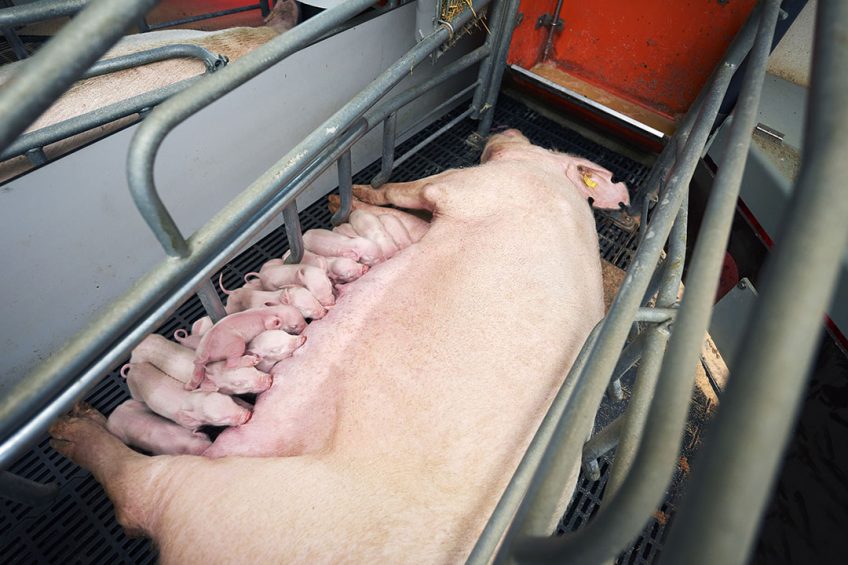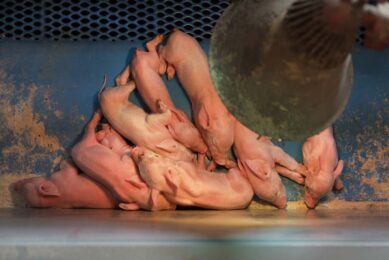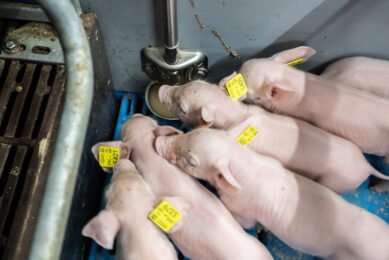Seizing opportunities: Nursing more piglets per sow

Are DanBred sows capable of nursing more piglets than they are given credit for? Definitely yes. This was confirmed by The Danish Pig Research Centre after completing an extensive trial, which explored the nursing capacity of DanBred sows.
In 2018, DanBred documented an impressive average of 17.2 liveborn piglets per litter in Denmark, and in the same period, reports showed that Danish herds had around 12 piglets weaned per weaning. The Danish Pig Research Centre (DPRC) decided to investigate this discrepancy, set up a trial and asked the question “Are DanBred sows capable of nursing more piglets than they are given credit for?”
Nursing capacity of DanBred sows tested
The Danish Pig Research Centre carried out the trial in a Danish commercial herd with 600 DanBred sows using on-farm replacement. The sows gave birth to an average of 19 liveborn piglets per litter. At litter equalisation, the smallest piglets were gathered with a nurse sow and were not a part of the trial. The nursing capacity of the sows was tested by dividing sows into two groups with 14 and 15 functional teats, respectively. All litters were equalised to 15 piglets regardless of the number of functional teats, and the piglets had access to dry feed from the first week of age but did not have access to supplementary milk.
The anecdotal assumption of the DPRC was that the group of sows with 14 functional teats would have fewer piglets at day 21 after farrowing compared to the group of sows with 15 functional teats. However, this was not the case. As seen in Figure 1, 97% of the DanBred sows had no problems nursing at least 13 piglets, which is one extra piglet per litter compared to the reports from Danish herds. Figure 2 shows that 93 % of the DanBred sows with 14 functional teats weaned at least 13 piglets, and 33% of the DanBred sows with 14 functional teats weaned all 15 piglets. This show that the potential for weaning 14+ piglets does not depend on the number of functional teats but rather on the condition of the sow. Additionally, the trial found no significant difference in the average daily weight gain, in weight at weaning or in litter weight gain between the two sow groups with 14 and 15 functional teats, respectively. Also, no considerable difference in body condition on day 21 was found between the two groups.
Figure 1 – DanBred sows successfully nursing 13-15 piglets (%).
Figure 2 – DanBred sows with 14 teats at farrowing successfully nursing 13-15 piglets (%).
The conclusion is that when equalising litters to 15 piglets without adding milk replacement, it has no significant influence if the sow has 14 or 15 functional teats at farrowing – neither on the number of pigs weaned per weaning nor on the weight of the litter. On the contrary, there are several positive effects of letting the sows nurse more piglets instead of moving surplus piglets to nurse sows, both in terms of piglet health and weight gain.
Large litters require commitment
This trial clearly demonstrates that DanBred sows have the potential and high capacity for nursing their large litters. However, it also tells us that it is essential to be attentive in the farrowing unit, respecting the fact that there is no quick fix when it comes to handling large litters. As in all matters of life, success with large litters requires commitment, perseverance and the ability to see opportunities and work continuously to improve performance.
Scientific literature, trials and experience gatherings all conclude the same; Increasing the number of weaned piglets per weaning by systematically letting the sows nurse more piglets than they have functional teats calls for a generous effort in the farrowing unit. Nevertheless, the payoff in terms of production efficiency, profitability and sustainability will be worth the effort.
Preparation, evaluation and strategy
The recommendation is to always evaluate the sows’ ability to take care of many piglets prior to farrowing by focusing on their body condition and appetite. Additionally, by counting the number of functional teats it will be possible to systematically let well-conditioned sows nurse one extra piglet than the number of available functional teats. This will reduce the need for nurse sows and, consequently, reduce the mixing of piglets, which will in turn increase piglet weight, the general age at weaning and have a positive effect on the development of the gastrointestinal tract (GIT). Moreover, it is vital for the success of the production that all farrowing unit employees know the strategy on the use of nurse sows and know the correct intervention, if conditions among sows or piglets change. Finally, a strategy on the use of supplementary feed should be considered.
Online knowledge hub
To release the full potential of the DanBred breeding animals and succeed with preparation and strategy efforts, the company has built an open, online Knowledge Hub, which contains easily accessible articles, informative videos and step-by-step guides on a broad variety of management topics – including successful weaning. Titles range from rearing many high-quality piglets, setting up and managing nurse sows for large litters, and supporting piglet growth with supplementary feeding, just to name a few.
The Knowledge Hub is a great addition to the existing manuals that helps producers and employees achieve even greater production results by sharpening their skill sets. With access to the Knowledge Hub and with DanBred sows in their pens, pig producers have the optimal prerequisites for seizing the opportunities at hand by letting the sows nurse more piglets.
Learn more about the Knowledge Hub by visiting the website danbred-knowledge.com
Author: Trine Lund Pederesen, Head of Technical Services, Danbred
Join 18,000+ subscribers
Subscribe to our newsletter to stay updated about all the need-to-know content in the pigsector, three times a week. Beheer
Beheer












 WP Admin
WP Admin  Bewerk bericht
Bewerk bericht